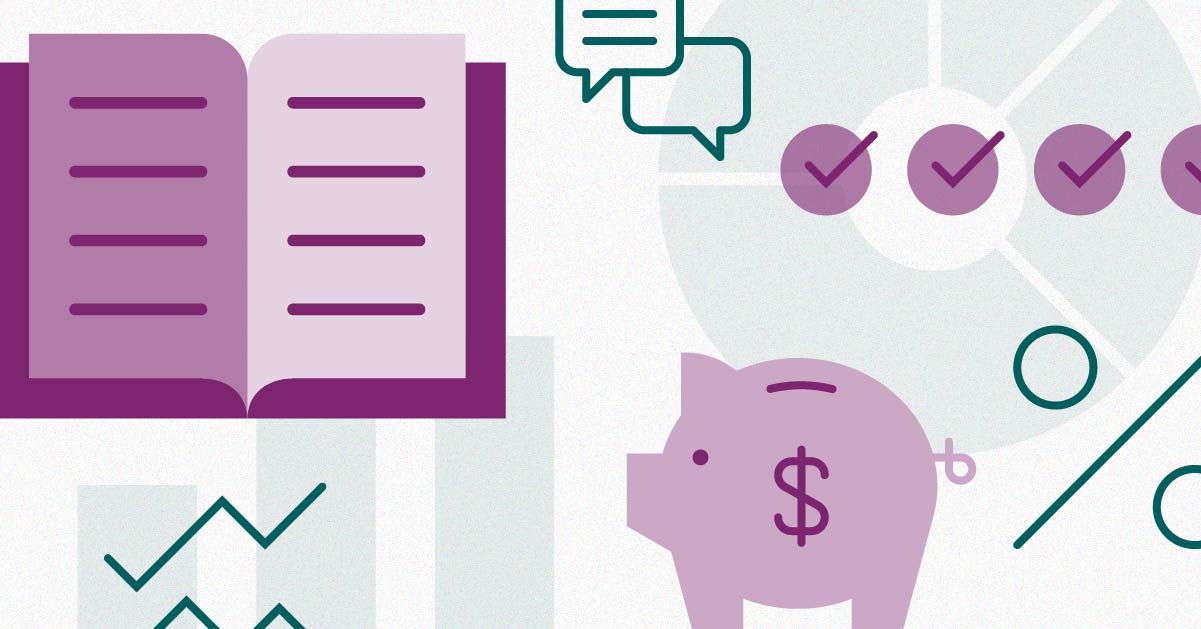What Is a Mortgage?
Here’s what you need to know about mortgage rates, reverse mortgages, and second mortgages.

Real estate is one of the biggest purchases, and investments, many people make in their life. Not everyone has all the money to pay up front, which is why people apply for a type of loan called a mortgage. In this article, we’ll be focusing on conventional loans.
First, let’s establish our main characters:
- The lender: The broker, bank, or government-sponsored enterprises Freddie Mac and Fannie Mae that issues the mortgage.
- The borrower: The person who applies for the mortgage and, if approved, pays back the lender.
Now, let’s break down the process:
- The borrower applies to mortgage lenders.
- The lender approves the borrower and offers a loan at a certain interest rate.
- The borrower pays back the lender.
Simple enough, right? Let’s get into the fine print.
The lender places a lien on the borrower’s property, giving them a legal claim on the property until the mortgage is paid off. If the borrower fails to pay their mortgage, the lender can take the property under the foreclosure process.
The amount of time, money, and interest the borrower will have to repay depends on the type of mortgage loan and requirements. Here are some of the most popular types of mortgage loans:
| Mortgage Type | Features and Benefits |
|---|---|
| Conventional Loan | This type of loan is backed by a lender (for example, banks) and requires a higher credit score from borrowers. |
| Fixed-Rate Mortgage | This type of loan has an interest rate that stays the same throughout the life of the loan. In other words, the borrower will pay the same monthly principal and interest payments, even in times of high inflation. However, if taxes or homeowners insurance go up, this could increase the monthly payment. |
| Adjustable-Rate Mortgage, or ARM | This type of loan has an interest rate that is fixed for a certain period and fluctuates throughout the life of the loan. Typically, the borrower will start with a lower interest rate and, therefore, lower monthly payments. |
| Government-Insured Loan | This type of loan has specific requirements that must be met to qualify. There are three types of government-backed loans: Federal Housing Administration loans, U.S. Department of Agriculture loans, and Veterans Affairs loans. |
Source: Freddie Mac.
What Is the Current Mortgage Interest Rate?
Mortgage rates are expected to decrease later in 2023 and through 2024, according to Freddie Mac’s Primary Mortgage Market Survey. Survey results, market forecasts, and mortgage rates are updated every week on its website.
Preston Caldwell, senior U.S. economist for Morningstar Research Services LLC, projects interest rates in 2024 and 2025 will fall much lower than what the Fed expects. Inflation, the Fed’s decisions, and housing market conditions can influence if mortgage rates go down or up.
“While we still expect home prices to decline in 2023, recent price resiliency caused us to moderate our price outlook,” writes Brian Bernard, director of industrials equity research for Morningstar Research Services LLC, in his housing forecast. “Based on our forecast sales mix, we expect the median blended home price to decline by 3% in 2023.
How Much Mortgage Can I Qualify For?
A mortgage calculator can help you learn what you can afford to borrow.
What Is a Reverse Mortgage?
This is a loan for older or retired homeowners looking to boost their income. Instead of making payments to the lender, it flips: The lender pays the borrower in the form of a lump sum or monthly payments. In short, the borrower is borrowing from the equity of their home.
To qualify for a reverse mortgage, borrowers must meet these requirements:
- Age: 62 or older.
- Residence: The home lived in most of the time. Second residences like a vacation home don’t qualify.
- Equity: Have at least 50% of their home paid off.
- Debt: No outstanding federal debt.
- Counseling: Attend a Department of Housing and Urban Development counseling session.
Before we get any further, let’s be clear: This isn’t free money. The borrower still must pay yearly property taxes, insurance bills, and other fees and closing costs related to the reverse mortgage. Plus, the borrower must pay the lender’s interest. The mortgage must be repaid by the time the borrower dies or moves out.
See if a reverse mortgage is right for you by visiting the Federal Trade Commission’s consumer advice website.
What Is a Second Mortgage?
To pay for major expenses like a home renovation, high-interest debt, or even a wedding, a second mortgage can be an attractive option for borrowers.
There are two main types of second mortgages:
- Home equity loan: Borrowers receive a lump-sum payment, and the lender gets a second lien on the property. There’s typically a fixed interest rate, which is paid on the entire loan.
- Home equity line of credit: Borrowers receive a line of credit with a revolving balance that they can draw on for a fixed period, and the borrower draws what they need. Interest rates vary and are paid on only the money the borrower uses.
Like a reverse mortgage, this isn’t free money. By taking out a second mortgage, the borrower agrees to two monthly payments. And if the borrower can’t pay, the lender can take their home.
Learn more about the reasons—and the risks of using your home as collateral—for a second mortgage by visiting the FTC’s consumer advice website.
The author or authors do not own shares in any securities mentioned in this article. Find out about Morningstar’s editorial policies.

/s3.amazonaws.com/arc-authors/morningstar/03956e27-4c76-4923-a5ab-4f03b58352a2.jpg)
/cloudfront-us-east-1.images.arcpublishing.com/morningstar/WDFTRL6URNGHXPS3HJKPTTEHHU.png)
/cloudfront-us-east-1.images.arcpublishing.com/morningstar/IFAOVZCBUJCJHLXW37DPSNOCHM.png)
/cloudfront-us-east-1.images.arcpublishing.com/morningstar/JNGGL2QVKFA43PRVR44O6RYGEM.png)
:quality(80)/s3.amazonaws.com/arc-authors/morningstar/03956e27-4c76-4923-a5ab-4f03b58352a2.jpg)